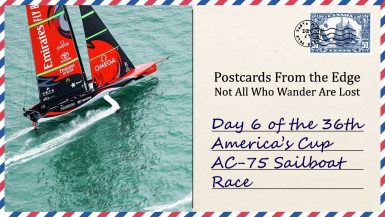USS R-14 (SS-91) was an R-class coastal and harbor defense submarine of the United States Navy. Her keel was laid down by the Fore River Shipbuilding Company, in Quincy, Massachusetts on 6 November 1918. She was launched on 10 October 1919 sponsored by Ms. Florence L. Gardner and commissioned on 24 December 1919, with Lieutenant Vincent A. Clarke, Jr., in command.

Submarine No. 91:
Displacement 569 (surfaced), 680 (submerged)
LOA 186 feet
Beam 18
Draft 14
Speed 13.5 knots (surfaced), 10.5 knots (submerged)
Complement 29
Armament 1 3 inch, 4 torpedo tubes, 21 torpedos
Class R-14 (Submarine No. 91)
After a shakedown cruise off the New England coast, R-14 moved to New London, Connecticut, where she prepared for transfer to the Pacific Fleet. In May, she headed south. Given hull classification symbol “SS-91” in July, she transited the Panama Canal in the same month and arrived at Pearl Harbor on 6 September. There, for the next nine years, she assisted in the development of submarine and anti-submarine warfare tactics, and participated in search and rescue operations.
The Search for the USS Conestoga
On 25 March 1921, the tug Conestoga steamed out of Mare Island, with a barge of coal sailing via Pearl Harbor to take up an assignment as station ship at Tutuila, American Samoa.
in May 1921 while on a surface search mission for the seagoing tug Conestoga about 100 nmi southeast of the island of Hawaii the R-14 ran out of usable fuel and lost radio communications.

Since the submarine’s electric motors did not have enough battery power to propel her to Hawaii, the ship’s engineering officer Roy Trent Gallemore came up with a novel solution to their problem. Lieutenant Gallemore decided they could try to sail the boat to the port of Hilo, Hawaii.

He, therefore, ordered a foresail made of eight hammocks hung from a top boom made of pipe bunk frames lashed firmly together, all tied to the vertical kingpost of the torpedo loading crane forward of the submarine’s superstructure. Seeing that this gave R-14 a speed of about 1 knot, as well as rudder control, he ordered a mainsail made of six blankets, hung from the sturdy radio mast. This added .5 knot to the speed.
He then ordered a mizzen made of eight blankets hung from another top boom made of bunk frames, all tied to the vertically placed boom of the torpedo loading crane. This sail added another .5 knot.
Around 12:30 pm on 12 May, Gallemore was able to begin charging the boat’s batteries. After 64 hours under sail at slightly varying speeds, R-14 entered Hilo Harbor under battery propulsion on the morning of 15 May 1921.
The Conestoga was not heard from again. Despite an extensive search, the only trace found of her at the time of her loss was a lifeboat bearing the initial letter of her name found near Manzanillo, Mexico.

Douglas received a letter of commendation for the crew’s innovative actions from his Submarine Division Commander, CDR Chester W. Nimitz, USN.
Retirement of the USS R-14
On 12 December 1930, R-14 cleared Pearl Harbor for the last time and headed back to the Atlantic. Proceeding via San Diego, and the Panama Canal, she returned to New London on 9 February 1931, and through the end of the decade conducted training exercises for the Submarine School.
In the spring of 1941, she moved down the coast to Key West, Florida, her homeport as of 1 June. In the fall, she returned to New London for overhaul, and on 22 November resumed operations out of Key West. Into April 1945, she conducted training exercises for the Sound School and patrolled the Yucatán Channel and the Florida Straits. On 25 April, she headed north and in early May arrived at Philadelphia.
R-14 was decommissioned on 7 May, struck from the Naval Vessel Register on 19 May, and sold on 28 September to Rossoff Brothers of New York City. She was later resold to the Northern Metals Company of Philadelphia and scrapped in 1946.







Wow, this is an amazing story.